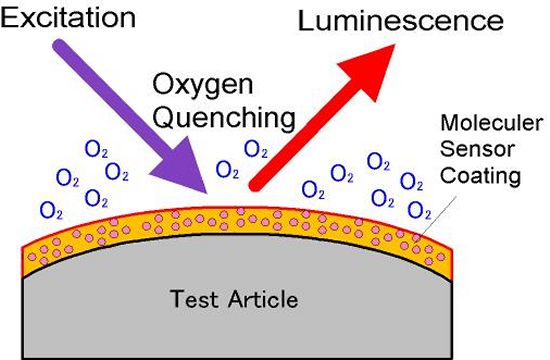|
|
Pressure Sensitive Paint:
Pressure Sensitive Paint, or PSP, is essentially a luminescent dye dispersed in an oxygen permeable binder. The
dye is excited by absorbing light, usually from the blue or UV portion of the spectrum, and it then returns to its
ground state by emitting light, usually in the red portion of the spectrum. There is an alternate process in
which the dye can return to its ground state without emitting light by interacting with an oxygen molecule. This
process is known as oxygen quenching. Thus, as the pressure of the oxygen above the PSP increases, the oxygen
concentration within the binder will increase, and the intensity of the emitted radiation will decrease.

Overview of PSP, its excitation and luminesence
How PSP is Used:

Typical PSP experimental setup [from Fundamentals]
A simple representation of a typical PSP experimental setup is shown above. The model is covered with PSP, which
is excited by absorbing light from the light source that has been passed through a blue filter. The light emitted
by the PSP is then passed through a red filter and measured by a camera. The camera images are typically redorded
by a computer which processes the data to measure the aerodynamic pressures on the model.
|




